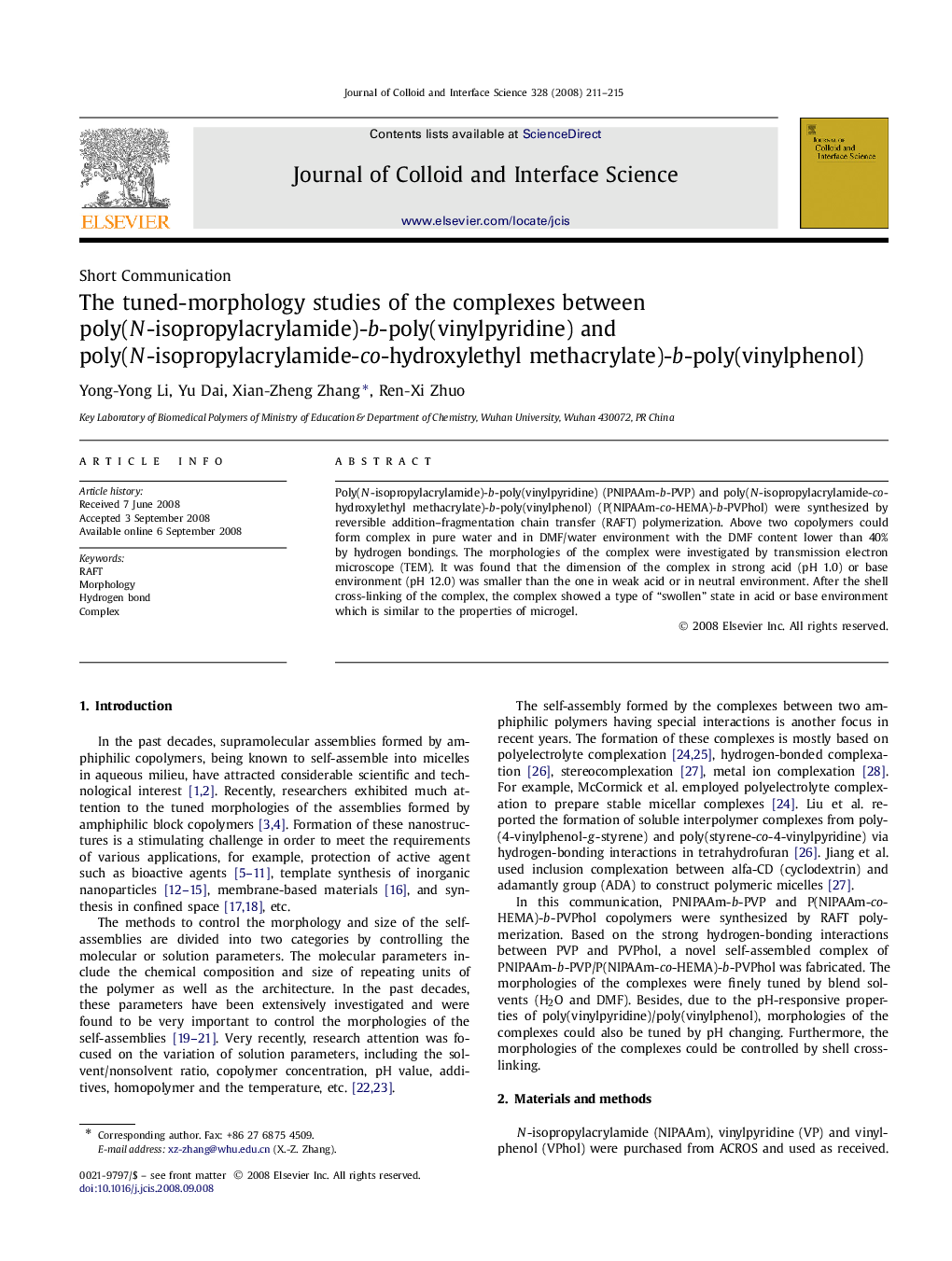| Article ID | Journal | Published Year | Pages | File Type |
|---|---|---|---|---|
| 610938 | Journal of Colloid and Interface Science | 2008 | 5 Pages |
Poly(N-isopropylacrylamide)-b-poly(vinylpyridine) (PNIPAAm-b-PVP) and poly(N-isopropylacrylamide-co-hydroxylethyl methacrylate)-b-poly(vinylphenol) (P(NIPAAm-co-HEMA)-b-PVPhol) were synthesized by reversible addition–fragmentation chain transfer (RAFT) polymerization. Above two copolymers could form complex in pure water and in DMF/water environment with the DMF content lower than 40% by hydrogen bondings. The morphologies of the complex were investigated by transmission electron microscope (TEM). It was found that the dimension of the complex in strong acid (pH 1.0) or base environment (pH 12.0) was smaller than the one in weak acid or in neutral environment. After the shell cross-linking of the complex, the complex showed a type of “swollen” state in acid or base environment which is similar to the properties of microgel.
Graphical abstractTwo PNIPAAm-b-PVP, P(NIPAAM-co-HEMA)-b-PVPhol polymers were synthesized by RAFT polymerization, which could form complex in water or DMF/water environment driven by hydrogen-bonded interaction. The morphologies of the complex which were investigated in pure water were pH-dependent and showed a compact assembly in pH 1.0, 12.0 and loose aggregation in pH 4.0. In addition, by cross-linking the shell of the complex, the size of the complex greatly increased at pH 1.0 and pH 12.0.Figure optionsDownload full-size imageDownload as PowerPoint slide
